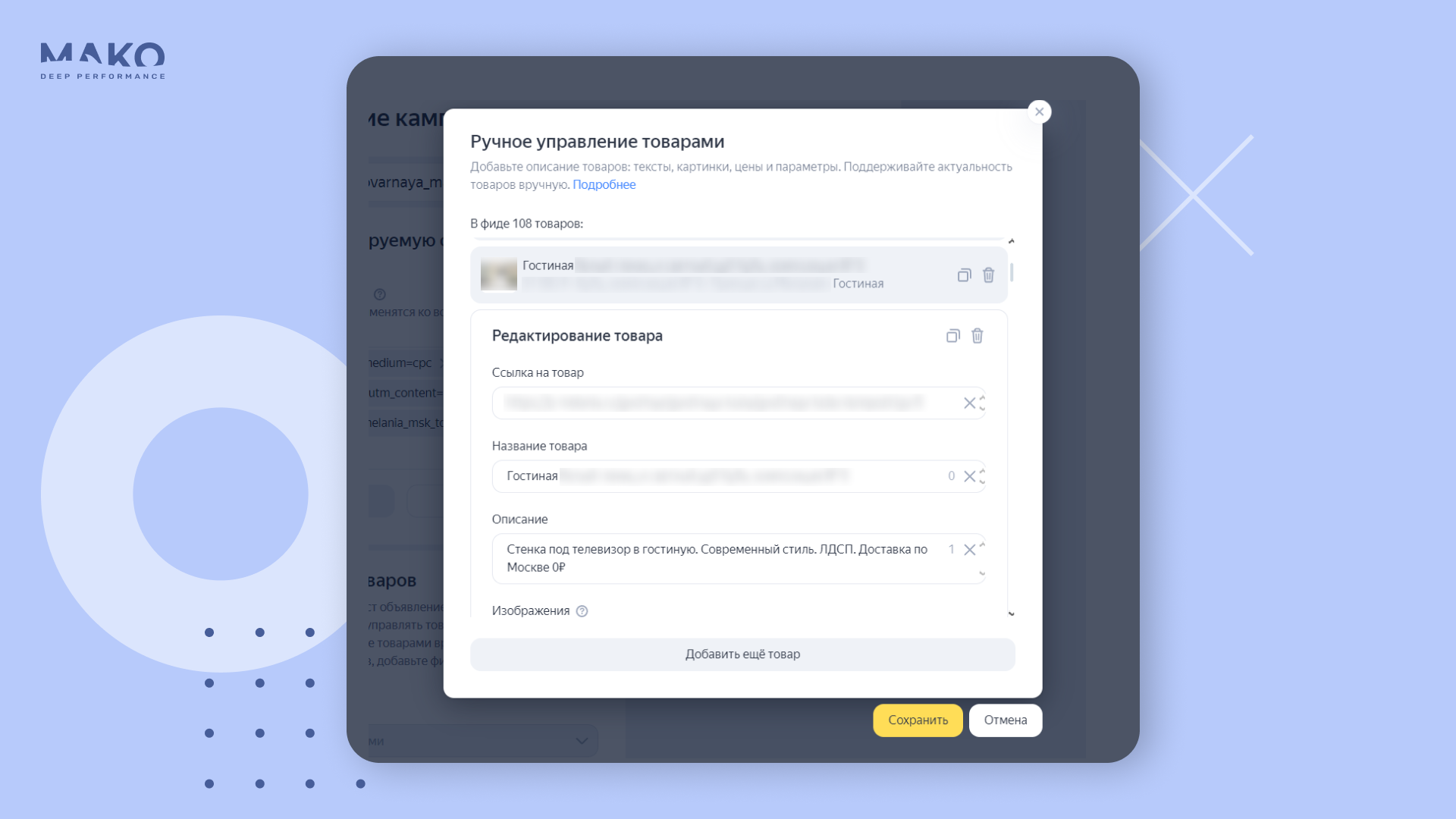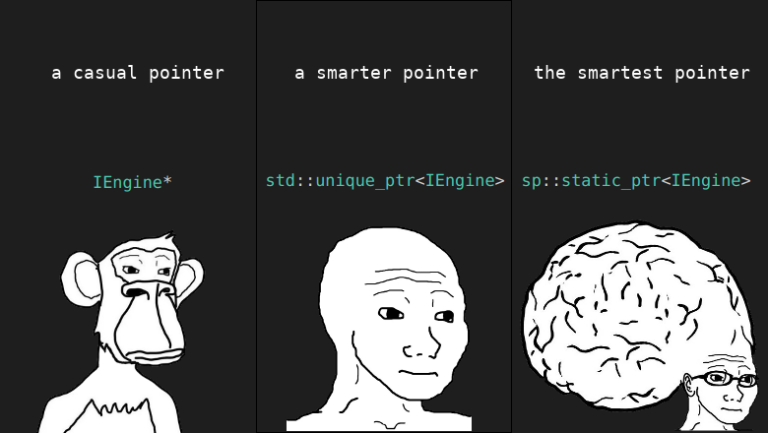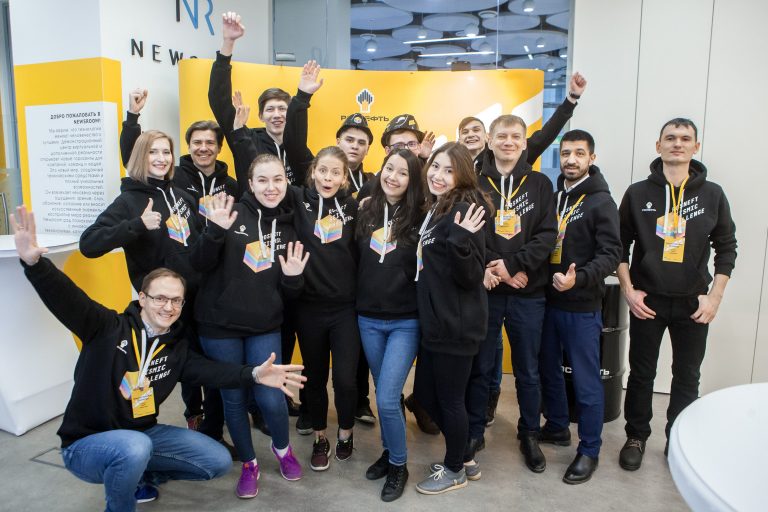How a furniture factory doubled the revenue of an online store, despite the dominance of marketplaces
How can a small online furniture store increase its sales while competing with large market players and their huge advertising budgets? What are the dangers of not advertising? How to effectively use your advertising budget? We share the methodology of contextual advertising for e-com. We tell you how we adapt it for a furniture project, look for non-standard solutions and test hypotheses. Bonus: checklist with methodology.
Spoilers:
A custom feed assembled by hand increased the return on Yandex Direct by 2 times
Website improvements increased the conversion rate of the online store by 2.5 times
Attracting a more solvent target audience brought another 35% of orders
We stimulated calls rather than requests and increased by 1.5 times
The case of a democratic furniture factory, which doubled the volume of applications without increasing its advertising budget.

Hello! In this case, we will tell you how a medium-sized business with a small budget can increase sales of its online store using e-com advertising and experiments.
How to sell to a small furniture factory: your online store, showroom or marketplaces?
Our client is a furniture factory, which was created 10 years ago by a family very passionate about their business. We started with the production of individual pieces of furniture to order. And after 2 years, one of the founders completed training as a furniture designer and began developing her own collections. She traveled to different countries, gained impressions and dedicated her collections to the cities that inspired her.
Within each collection, living rooms, hallways, bedrooms and upholstered furniture were developed. You could buy everything for an apartment in the same style at once or pay for the production of individual sets, items and even custom-made furniture. In 2018, we opened our own showroom and began developing delivery throughout Russia.
The main advantages of the factory's product are high-quality furniture in modern and minimalist styles at an affordable price. At first we promoted using social networks and word of mouth. Then they connected contextual advertising, but sales did not grow. The brand is unknown, the advertising budget is small.
In 2022 we entered the marketplaces. There, sales began to develop more rapidly, but margins were lower due to platform commissions and a low average check. Basically, inexpensive items, such as a table or chest of drawers at the most affordable price, were popular. And almost all purchases were one-time purchases, because you can’t transfer marketplace clients to your database.

The head of the factory wanted to develop his own online store and began to study the success of his competitors. I read the articles and became interested in our a case about saving a furniture factory.
At the end of 2022, he came to us with the desire to bring more orders through the website and reduce the cost of a lead. Advertising budget – 200,000 rub.
Why spend 200K on contextual advertising if you can go to marketplaces?
In principle, 200k is a normal budget for contextual advertising. But there is high competition in the furniture niche and it is difficult for small online stores to compete with monsters like HOFF and Divan.ru. They have well-known brands that inspire trust, cool websites and more favorable conditions for customers, for example, the availability of ready-made furniture and free delivery. These companies can afford multi-million dollar advertising budgets, bid high in auctions, and get higher conversion rates on their ads than smaller furniture factories.
How can a small online store advertise? Maybe not spend money at all and go to marketplaces?
Firstly, refusing advertising means voluntarily giving up your market share to competitors. Secondly, if you choose the right advertising strategy, even with a small budget, you can achieve good results.
Yandex Direct with a budget of 200K is an effective advertising technique for a small online store
We specialize in e-com and furniture advertising. Therefore, we have developed our own methodology, which we adapt to each individual project and be sure to add hypothesis testing to it. The most important thing is to spend every ruble of a small budget very thoughtfully and responsibly.
Let's talk about this technique using the example of what we did for an online store of a furniture factory. We will not write about basic things, but only those points that are important to pay attention to. And the entire methodology can be seen in our universal checklist.
We started by working on analytics, which we always do before launching advertising. Why in advance, in addition to acting consciously? It is important for us to have agility. After all, when campaigns are already running, you need to have ready-made data on hand to quickly launch new tests, rather than waste time searching.
Here's what we configured:
1. Composite goal – the user’s path through the sales funnel, which, in case of problems, will show us at what stage the “dump” of buyers occurs. And we will be able to resolve the issue by improving the site.

2. Microconversions — intermediate user actions from the moment of entering the site until placing an order (going to the page about delivery and conditions or to the cart, adding to the cart, etc.). The most commonly used option is “add to cart”. But it happens that such data is not enough or the system is trained to drive “basket traders” instead of buyers. Other micro-conversions, “non-commercial” ones, are required. Therefore, we always analyze in advance how much time and how many pages the user needs to make a purchase. And we use this data to set micro-conversion goals.
3. Transfer of offline conversions — for actually paid for goods, and not just based on the fact of placing an order through e-commerce. This helps train advertising campaigns on audiences who make actual purchases.
Having set up analytics, we moved on to advertising.
1. We collected semantics:
General and category queries regarding the specialization of our factory. We identified the segment that best characterizes the client’s product offering. For example, “Italian minimalist dressing room” or “inexpensive solid wood table,” etc. This segment and queries similar to it in terms of topic were worked to a minimum frequency. At the start, advertising was allocated to a separate search campaign with a manual strategy in order to guarantee that it would receive impressions for the highest priority and potentially conversion queries. And then they switched to automation.
Not only did they make cross-minus a standard one, but they also solved the problem of auto-targeting, which does not allow minus between product groups and can show ads that are not entirely relevant to the request. For example, instead of “a sofa with an orthopedic mattress,” the user saw “a sofa with a spring mattress,” simply because it is also available on the site and auto-targeting considered it suitable. Therefore, we added negative keywords at the group level to differentiate traffic by group. From the “orthopedic” group, the word “spring” was omitted and vice versa. And in general queries, display for both characteristics was disabled. This is important for reducing bounce rates and increasing conversions.
2. Launched advertising on Search, YAN, Dynamic Search and Retargeting.
We came to the conclusion that the classic retargeting format is becoming outdated and inferior to smart banners that create more personalized ads. That is, they show exactly the living room that the user looked at on the site, and not from some other collection. Therefore, they abandoned retargeting.
3.Connected a Product campaign. To ensure its effectiveness, we paid special attention to the product feed (a special file that describes the assortment of the online store). Now we'll tell you how.
A custom feed assembled by hand increased the return on Yandex Direct by 2 times
The client already had a feed prepared for promoting the store on marketplaces. But it was not suitable for Y.Direct algorithms.
And we also didn’t need the standard dynamic feed for contextual advertising, which automatically collected all the site’s offers and passed them on to Yandex algorithms. For example, there were 7 collections on the site, but only 4 sold well. But the automation doesn’t care, it aims to drive traffic to all collections. And we needed to attract users to what was popular.
That's why we created a manual feed in the Direct interface. We added the most popular products to it, there weren’t many of them. Descriptions and titles were changed in the new feed. Previously, designer texts were loaded there, which were more suitable for a booklet than for contextual advertising. For example, this description: “In a small living room or cozy bedroom you can easily find a place for a compact set. Such a set is the modular living room Mexico…”

Such lyrics are not appropriate in advertising. We need concise, succinct and targeted texts. For example, this description is effective: “Wall for a TV in the living room. Modern style. Chipboard. Delivery in Moscow 0Р»

Yes, we had to tinker with the manual feed: the prices in it also need to be updated manually, and the traffic is a little less. But! We didn't waste our advertising budget on less popular items, attracted higher-quality users to the site and, as a result, received more actual orders.

Compare the indicators of December 2022, when advertising was carried out using a dynamic feed, and the statistics of January-February 2023, when we started working and launched a manual feed. In February, the number of leads increased by 2 times, and the CPA cost per lead was reduced from 7,240 rubles. up to RUB 3,391

Website improvements increased the conversion rate of the online store by 2.5 times
When we did the audit before starting work, we suggested making several changes to the site. But the client was not ready to make adjustments then. After the first two months of work, we analyzed the user’s conversion from one stage of the funnel to the next (thanks to the composite goal that was set up before starting work). Statistics have shown that we lose the majority of customers when they go to the catalog and product card. At a weekly meeting with the client, we discussed the need for improvements to the site to reduce waste. Not many changes were required and the client agreed.
That's what they did.
1. On the main page:
the top menu was fixed on the scroll to increase user comfort when turning pages;
got rid of the clutter of elements, made the logo smaller – made the style more modern;
added a burger menu for the mobile version;
made contact buttons (chat on the website, whatsapp, call back form)
The illustration below shows a fragment of our audit with recommendations and screenshots of the old main page:

And this is what the main page looked like after the adjustments:

2. In the catalog:
In the sections with the “Living Room”, “Bedroom”, “Hallway” complexes, small categories such as “cabinets”, “chests of drawers”, “racks” were added. We also made landing pages for queries in these categories. To enable users to purchase more individual items.

3. In cards:
We began to introduce more 3D visualizations into product cards and new products. From analysis of competitors and our experience in the niche, we know that stores that, in addition to photographs on a white background, have realistic renderings (interior design visualizations) have higher conversion rates into a completed order;
Ratings, reviews and photos of customers were added to the cards and landing page, which is very important for a product such as furniture. Previously, most products had no reviews or only one. Users clicked on links where there was no information and left the site.

These solutions improved navigation on the site, made it more modern, “economy” and increased the conversion to target action from 0.47% to 1.25%, that is, 2.5 times.
Men and women 35+ brought another 23% of orders to the furniture factory
In the first months of work, almost a third of our audience were people over 55 years old. To increase sales, we decided to attract a younger and more solvent audience. Here we again came in handy with the analytical data collected before the launch of advertising on the behavior of the target audience on the site. Our target was men and women 35+.
We began to retrain Yandex smart campaigns for the new target audience. When setting up strategies, we used micro-conversions that correlate well with macro-conversions (applications, calls, chat, messengers). These were: adding to cart and viewing more than 5 pages. There is a shopping cart on our website, but those who prefer to call do not use it, so we added depth to browsing the pages.
Thanks to these settings, the Product Campaign and Campaign Masters received 23% more leads.

What brings in more revenue: calls or online orders? We targeted calls and grew by 1.5 times
So we created an optimal feed, improved the website, began to attract a more solvent audience and attracted 2.6 times more leads than our client previously had. But summer was ahead – a time of calm in purchasing activity in the furniture niche. It was necessary to maintain sales until the high season in the fall.
We began to dig even deeper into our target audience and saw that among buyers, those who prefer to call have the highest receipts. These people spent at least 5 minutes on the site and did not add anything to the cart, which is logical, since calling is more convenient for them. We trained the campaign to bring just such users to the site using a complex goal: call + 5 minutes on the site.
As a result, we increased the number of calls to 50% of all leads.

In August, the number of leads increased 1.5 times to 132, of which 50% were calls. At the same time, the cost per lead was at a record low due to decreased competition during the off-season.

Result: without increasing the advertising budget, the furniture factory doubled the volume of leads year on year
If you have a small online store and an advertising budget of about 200K, you can increase its turnover if you make smart decisions in contextual advertising and constantly look for new growth opportunities.
Overall, on this project we helped the client double the number of orders in a year. And they did this without increasing the advertising budget, because they reduced the cost of a lead.
The total number of leads in 2022 is 487 leads with a CPA of 5,280 rubles and in 2023 969 leads with a CPA of 2,890 rubles

If you need an increase in calls, order for 0 rub. our in-depth audit of contextual advertising on makodigital.ru
How will this be useful?
We will find technical errors in campaign settings and segment them by level of danger: minor, significant and critical.
Let's check the statistics and find the reason for the increase in the cost of circulation and the fall in profits.
Important! We will recommend positioning, content and development (conversion rate, usability, functionality) for the site.
We will develop a contextual advertising strategy with new growth points.



